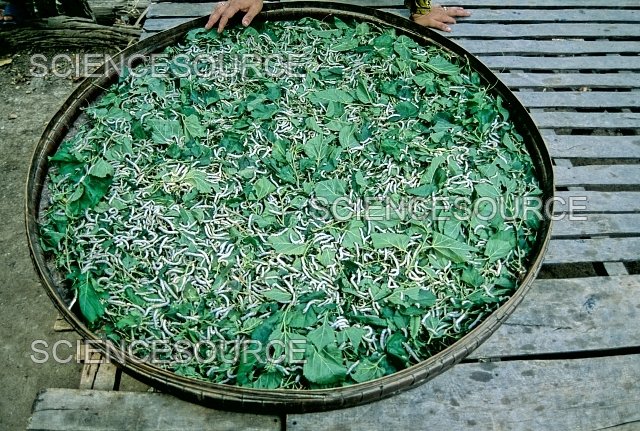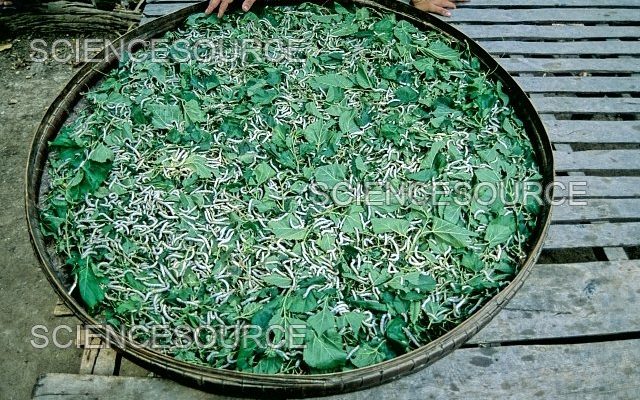
Silkworms, scientifically known as *Bombyx mori*, are not just any bugs; they’re the source of silk—a material that has been prized for centuries. By integrating silkworm rearing into school programs, students get to experience hands-on learning about life cycles, ecosystems, and even some economics. Plus, it fosters a respect for nature and agriculture, which is more important now than ever.
In this article, we’ll explore silkworm rearing as a fantastic school agriculture project. From starting the project to the benefits it brings, and even some challenges you might encounter, you’ll have a complete guide to help you design a flourishing educational experience.
Why Choose Silkworm Rearing?
You might be wondering why silkworms, out of all the possible projects, deserve a spot in your school’s curriculum. First off, they have a simple and fascinating life cycle. Silkworms go through four stages: egg, larva (caterpillar), pupa (cocoon), and adult moth. This makes them perfect for teaching biological concepts in a tangible way.
Moreover, silkworms multiply quickly. A single female can lay hundreds of eggs, so if you start with a few, you can easily have a thriving colony in no time. This rapid growth allows students to witness firsthand the results of their care and attention, keeping them motivated and engaged.
Plus, if you’re thinking about environmental consciousness, silkworms have a relatively small ecological footprint. Unlike many livestock, they require minimal space and resources. The project can be a great way to introduce discussions about sustainability and responsible farming practices.
Setting Up the Silkworm Environment
Creating the ideal space for your silkworms is essential. You don’t need a fancy lab; a simple container will do. Here’s what you’ll need:
- Container: A clear plastic box or glass jar with a lid can work perfectly.
- Food: Silkworms love mulberry leaves, but if they’re hard to find, you can use artificial diet options available at pet stores.
- Temperature & Humidity: Keep them in a warm area (around 75°F to 85°F) and maintain some humidity to prevent them from drying out.
It’s crucial to regularly check on your little buddies. Just like us, they need clean air and a consistent food supply. Make sure to change the food daily, as they grow quickly and can go through a lot!
You might want to set up a schedule for students to take turns caring for the silkworms. This way, everyone gets a chance to bond and learn about their needs.
The Life Cycle of Silkworms
Understanding the life cycle of silkworms is a fantastic lesson in biology. They go through various stages, and each stage comes with its own set of responsibilities for the students.
1. Egg Stage: The journey begins when the tiny silkworm eggs hatch. The eggs are very small and usually black or dark brown. Students can observe how these eggs mature into larvae within a week.
2. Larval Stage: The real fun starts! As soon as they hatch, the silkworms enter the larval stage. They will munch on mulberry leaves and can grow to about 10,000 times their initial size. This is a great opportunity to teach students about growth rates in nature.
3. Pupal Stage: After about 4 to 6 weeks of eating, the silkworms enter the pupal stage. This is when they spin their cocoons. The students can observe and even collect the silk threads.
4. Moth Stage: Finally, the cocoons transform into adult moths. Interestingly, the silkworm moth can’t fly, which makes it a unique creature.
Each phase not only offers biological insights but also a chance to encourage responsibility among students. As they watch their silkworms grow, they learn the importance of commitment and care.
Educational Benefits of Silkworm Rearing
Engaging in silkworm rearing offers a host of educational benefits for students:
– Hands-on Learning: Instead of just reading about metamorphosis in textbooks, students witness it in real time. This interactive approach can enhance memory retention and spark curiosity.
– Teamwork and Collaboration: Managing a silkworm project requires collaboration, whether it’s sharing tasks or discussing observations. Students can learn the importance of teamwork.
– Science and Critical Thinking: Monitoring the conditions of the silkworms teaches students to think critically. They’ll learn to adjust variables such as temperature and humidity for optimal growth, making it a lesson in scientific experimentation.
– Connection to History and Culture: Discussing the history of silk production can open up dialogues about culture and trade. Students might be surprised to learn how silk has shaped economies and societies for thousands of years.
Overall, this project encourages a well-rounded educational experience, touching on biology, ethics, teamwork, and history.
Challenges and Considerations
Like any project, silkworm rearing comes with its own challenges. Honestly, it’s not all smooth sailing, but overcoming obstacles can be part of the learning process.
– Temperature Control: Maintaining the right temperature can be tricky. If it gets too cold, the silkworms may not thrive, and if it’s too hot, they might die. Regularly check the conditions and adjust as necessary.
– Feeding Issues: Depending on the season, mulberry leaves might not always be available. Instead, having a reliable artificial diet as a backup can save the day.
– Pests or Disease: Just like any living thing, silkworms can be susceptible to diseases or pests. Educating students on proper hygiene and care can significantly reduce these risks.
– Time Commitment: Rearing silkworms requires regular attention. It’s important to set up a clear schedule so that responsibilities are shared and everyone stays engaged.
By being proactive and prepared, you can navigate these challenges, turning them into valuable learning moments for students.
Silkworm rearing as a school agriculture project is an engaging and educational experience that introduces students to the wonders of nature. Through nurturing these creatures, students will learn not only about biology but also about responsibility, teamwork, and sustainability.
So, if you’re considering a new project for your classroom, think about giving silkworms a shot. It’s an opportunity to create lasting memories and a deeper understanding of agriculture. With the right planning and a bit of care, you’ll find that these little insects can lead to big lessons!

